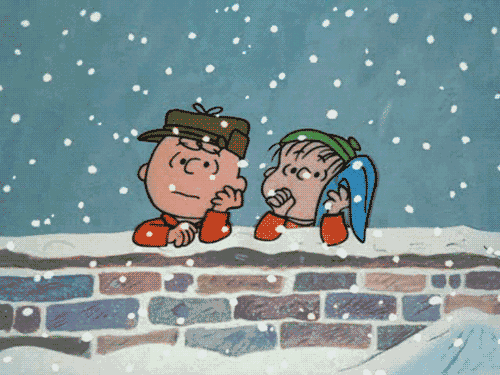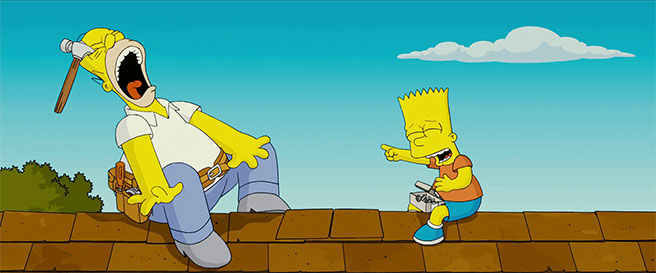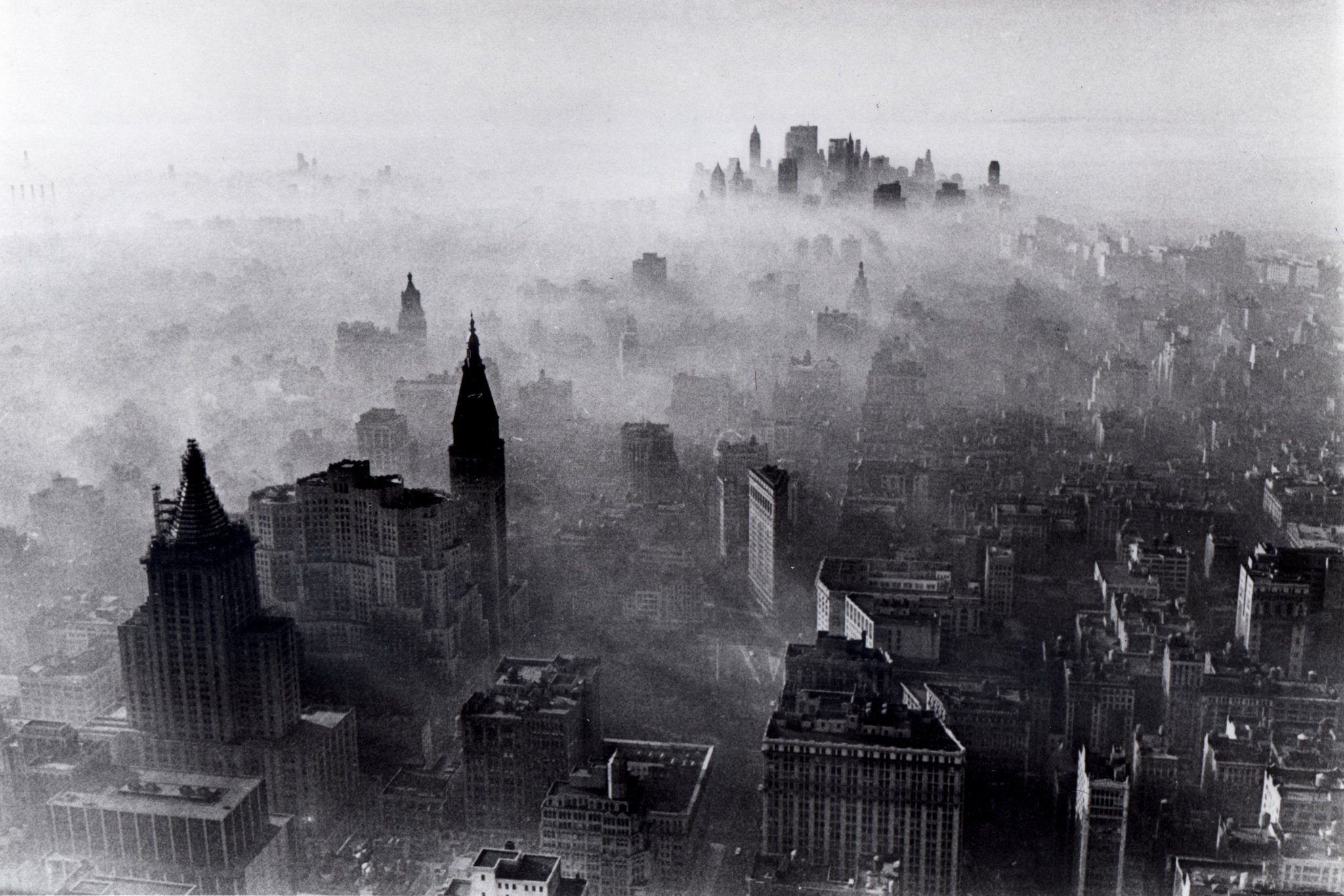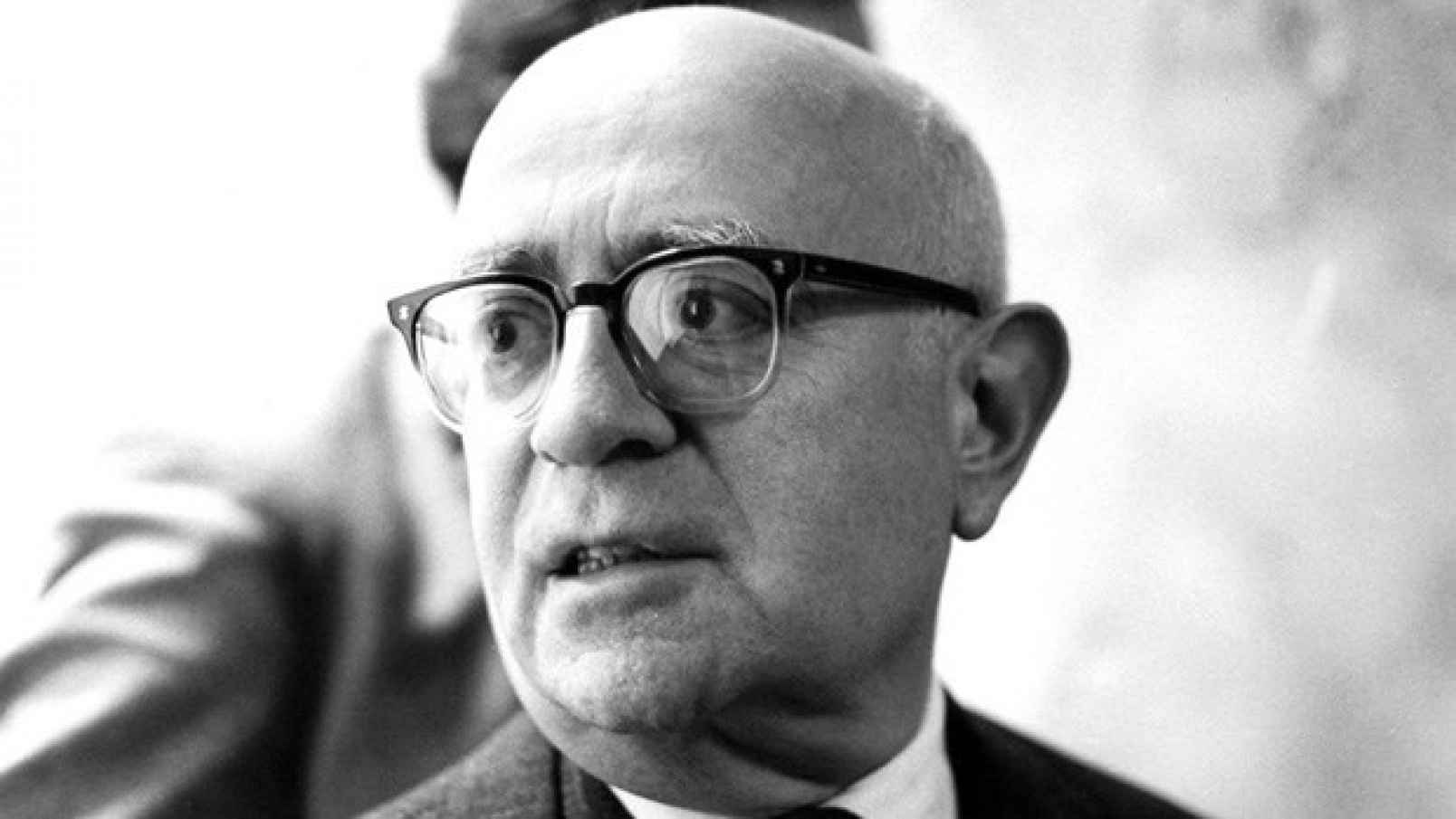
Are there really any holdouts? Surely all of us—at least all of us above and below certain ages, and from a certain kind of America and possessed of a laptop or television or grammar-school-aged child—have a soft spot for Charlie Brown. Maybe we are of the “We Love You Charlie Brown!” tribe,[1] or maybe some slightly less exuberant cohort, but especially in December, we feel that tug of attachment. On the face of it, our fond feelings for Charlie Brown smack of a kind of cultural conservatism, that yearning for the America-that-never-was that washes across this great land as reliably as faux snow returns to the streets of Tampa year after year.[2] Still, when you think about what the little bald kid and his spindly tree and his Scripture-spouting friend might actually stand for, you might just stop right in the middle of Target’s giant television department and scratch your head at the evidently subversive quality of the narrative of A Charlie Brown Christmas.
But you’d be wrong. The really subversive quality of A Charlie Brown Christmas is that it invites you to consume an anti-materialistic vision of true Christmas, all the while standing at the pinnacle of a quintessentially capitalist brand.
Think about it.
“Christmas,” a made for television special bankrolled by Coca Cola, elevates an explicitly anti-materialistic, anti-capitalistic (anti)hero in Charlie Brown who rides his rebellion against commercialism not only to (fleeting) social acceptance[3] but also spiritual illumination. Charlie’s evident virtue, the rightness of his beliefs and actions, is thrown into relief by the evidently avaricious character of his companions and the warped and garish Christmas celebrations that surround him. Even as a child, you notice that Charlie’s sister Sally has crossed some kind of boundary when her Christmas wish list veers into a demand for hard currency: “Make it easy on yourself [Santa]: just send money.” And we scoff at Charlie and his friends’ obsession with Christmas cards, and wince at the Christmas tree lot filled with pink and red aluminum trees and equipped with waving spotlights. Charlie, on the other hand, intuits the emptiness of the Christmas practices that surround him and rebels, first by associating himself with a play about the biblical story of Christmas and then with a grand gesture of empathy and generosity.
Charlie’s journey in A Charlie Brown Christmas shares attributes with other Peanuts staples; Charlie is the underdog, yearning for peer acceptance and fraught with anxieties. He is, as Umberto Eco describes him, a character whose alienation has become an abyss, yet one whose sensitivities are “Shakespearean:” Charlie Brown may not know what he knows, but he knows what he feels. At the beginning of the special, while the rest of the gang are headed toward a pond for skating, he pauses with Linus at the wall, a primary locale for soul-searching dialogues throughout the Peanuts genre[4] and wonders if it’s his fault that he is alienated by the Christmas commercialism that surrounds him:
I think there must be something wrong with me. I just don’t understand Christmas, I guess. I might be getting presents and sending Christmas cards and decorating trees and all that, but I’m still not happy. I don’t feel the way I’m supposed to feel.
Importantly, this moment works in two ways, not just illuminating the troubled psyche of our yellow-shirted friend but also sending him down a rabbit hole that will end in a Christmas critique.[5] Indeed, A Charlie Brown Christmas is essentially a quest, a journey that Charlie Brown rather haphazardly undertakes to reconcile his expectations about Christmas with his responses to it. From the wall, Charlie Brown is flung across the iced pond to the feet of the Peanuts most solidly establishment figure, Lucy. Purveyor of lemonade-stand psychiatric advice[6], Lucy hastens the process of Charlie’s self-discovery by encouraging him to take on the role of director for the town’s nativity play, a move she (mistakenly) believes will co-opt him. But in the end, Lucy’s wish that Charlie Brown assimilate her view of Christmas backfires.

What we remember most is the tree. Despite Lucy’s attempt to redeem Charlie by bringing him into the values of a contemporary Christmas, one in which the nativity play becomes a backdrop for “pretty girls” and jazz, Charlie is unmalleable, unable to give himself over the party atmosphere, but as yet unable to explain to himself the “why” of his unease. So Lucy casts him off the set—with Linus, who is already ahead of Charlie in understanding what is amiss, recognizing that Christmas has become both “too commercial” and “too dangerous”—and sends him off to get a tree that will create the “proper” Christmas spirit. This quality, no surprise, is seen rather differently by those who have drunk the Kool-Aid of a sparkly Christmas present and those who have not. We all remember that Lucy wants a giant, big, shiny aluminum tree—Charlie doesn’t know what he wants until he sees it.
The quest for the tree is fever dreamlike, epic. Charlie, Christlike, navigates the Sodom and Gomorrah of light polluting tree lots and redeems a little Lazarus tree[7]. Ok, technically it was Linus who elevated the tree, who made it beautiful by swaddling it in his blanket, covering it with ornaments from Snoopy’s dog house, quoting Luke, and humming “Hark! The Herald Angel Sing.” But the moment is transcendent for Charlie Brown and for the viewer. The narration included in the original script makes the revelatory nature of the moment clear: “At last, the season seemed 100 times brighter. And for Charlie Brown, it was truly the merriest Christmas ever”[8].
To read A Charlie Brown Christmas as a text-in-isolation, what some have called a sacred reading and Eco sees as an experience of childhood innocence, is to open the possibility of seeing Charlie as a an honest broker of anti-capitalist ideology. If Lucy, as Eco argues, is society’s representative, “treacherous, self-confident, an entrepreneur with assured profits, ready to peddle a security that is completely bogus but of unquestioned effect,” then Charlie’s (and Linus’s) triumph in the Christmas special is freighted with meaning. Brought together not by (modern) things but by an overarching spiritual truth, the Peanuts end their Christmas special in solidarity against commercialism and consumerism. And lest there be any doubt that this is a feel-good moment, in which the audience is expected to partake, the special closes with the whole Peanuts gang loo-looing their way through Hark the Herald Angels Sing. Be honest, you can hear it if you shut your eyes and think about it.
That’s a powerful moment, capable of stopping full-throated last-minute shoppers in their tracks or quelling the sibling squabbling at the foot of the tree. But what does it mean? What does it mean for us to have an aha, I-so-get-the-real-meaning-of-Christmas moment, while watching an advertiser-paid-for Christmas special viewed against the backdrop of our own Christmas excesses? Thomas Frank, of course, would argue that Charlie Brown and the Peanuts and Charles Shultz are no more than stooges for capitalism. In “Dark Age: Why Johnny Can’t dissent,” Frank demonstrates the ways in which the media and entertainment industries[9] incorporate anti-capitalist sentiments into their programming and advertisements:
Now we are sold cars by an army of earringed, dreadlocked, goateed, tattooed, and guitar-bearing rebels rather than the lab-coated authority figures of the past.[10]
Frank argues that, “for all our radical soda pops” and “alternative lifestyles,” consumers allow corporations to govern our tastes and expression—in the end, the “countercultural idea” became “capitalist orthodoxy,” and the consumer became a complicit party in that transformation. In Frank’s reading the Peanuts cannot achieve dissent—Charlie Brown cannot be truly rebellious—because they are encapsulated in a vehicle designed for selling. To sell Coke, to sell Peanuts paraphernalia, a television channel, insurance. Seen in this light the anti-consumerist, pro-Christian ideals of A Charlie Brown Christmas are simply another advertising strategy, designed to give a desirable moment of feel-good old-fashioned Christmas as tonic to the buying.
Frank’s argument does not presume an aware consumer and, indeed, suggests that our complicitness in the culture industry is largely unconscious and that that might make it easier for us to ignore contradictions between certain of our desires (to be rebellious, for example) and to consume. Others, like Stephen Lind, argue that when audiences confront cultural fixtures like the Peanuts, they are able to keep a “sacred” reading in mind while undertaking a secular one. While a “secular reading,” in Lind’s view, would read A Charlie Brown Christmas through the lense of the enormous material success of the Peanuts franchise, such a reading could co-exist with one that appreciated “sacred” elements, like the appreciation of justice, generosity, and anti-consumerism:
While Schulz was certainly trying to sell strips that would sell papers, he has also indicated that there is occasionally something more lurking behind the beagle … his statements speaks towards a desire for Schulz to have his cake and eat it too … desiring to maintain the pop culture success of his strip while holding onto the ability to occasionally interject a thought of sacred value[11].
So who is right? Eco, who sees the value in an innocent reading of the Peanuts? Frank, who suggests that it is impossible to stand outside of capitalist culture and thus impossible for any pop cultural vehicle to have truly radical stand? Or Lind, who seems to suggest we can have our innocent encounter with A Charlie Brown Christmas and our secular reading too?
Taken as a standalone work, A Charlie Brown Christmas does seem to evoke the ‘innocent’ interpretation offered by Eco. The special constitutes a spiritual journey, both for Charlie Brown and the rest of the Peanuts, but also for the viewer—compelled to grapple with the same questions of fading traditionalism and alienation in the face of commercialism. If it feels cathartic to the viewer, can it not be so? In the end, Frank fails to appreciate the ability of the viewer to find a spark of true criticism within a co-opted object—just as Charlie Brown was able to find solace in a lot filled with horrendous aluminum trees.
Footnotes:
[1] If Google is a barometer of pop cultural devotion, there are more than 50,000 sites devoted to the theme of “We Love You Charlie Brown,” with thousands on Pinterest alone.
[2] Happy customers book “snow blows” for the holiday season, events that dump dozens of tons of finely shaved ice in winter-brown backyards. The locals, apparently, don’t quite know what to make of it all: “They’re just excited. They don’t know what to do. It’s like watching a baby zebra learn to walk…” (https://tinyurl.com/y9crmylb)
[3] Umberto Eco took up Charlie Brown’s insecurities and salvation in a June 1985 New York Review of Books Essay (https://tinyurl.com/y7ywryle).
[4] The wall is a recurring fixture and locale of the Peanuts strips, where Charlie, Linus, Lucy, and the others mull over their old-soul problems. It’s the local pub of the Peanuts world.
[5] A paradoxical critique, when we think about the relationship between the Peanuts empire and Christmas: games, dolls, the gigantic Snoopy that graces the annual Macy’s parade.
[6] Before she’ll share, she asks Charlie Brown for a nickel (how about, Like Sally, Lucy has her eye on the money): “Boy, I love the beautiful sound of cold, hard, cash, that beautiful, beautiful sound. Nickels, nickels, nickels. That beautiful sound of plunking nickels.”
[7] Yes, yes. A conflation of Old and New Testaments. But if Christ had encountered Sodom and Gomorrah it would have worked out like this.
[8] The full script can be found here (https://tinyurl.com/y79uj55s)
[9] Read, the culture industry
[10] It’s the difference between being sold a Volkswagen because it will help you get your family from home to work, and being sold a Mustang because everyone is telling you to buy a VW—but in the end what you’re really being sold is a second hand Maserati.
[11] Steven J. Lind, author of A Charlie Brown Religion has probed these ideas in a number of places including in this 2008 essay on sacred and secular readings of the Peanuts (https://tinyurl.com/ybo3wcot)
Works Cited
Eco, Umberto. “On ‘Krazy Cat’ and ‘Peanuts.’” The New York Review of Books 13 June 1985. <http://www.nybooks.com/articles/1985/06/13/on-krazy-kat-and-peanuts/>
Frank, Thomas. Dark Age: Why Johnny Can’t Dissent <https://thebaffler.com/salvos/dark-age>.
Lind, Steven J. “Reading Peanuts: The Secular and the Sacred.” Interdisciplinary Comic Studies 4.2 (2008). <http://www.english.ufl.edu/imagetext/archives/v4_2/lind/?print>
Schultz, Charles. A Charlie Brown Christmas (manuscript)
An earlier draft of this essay was read by Joey Fox.
I have written this essay in the style of David Foster Wallace.






